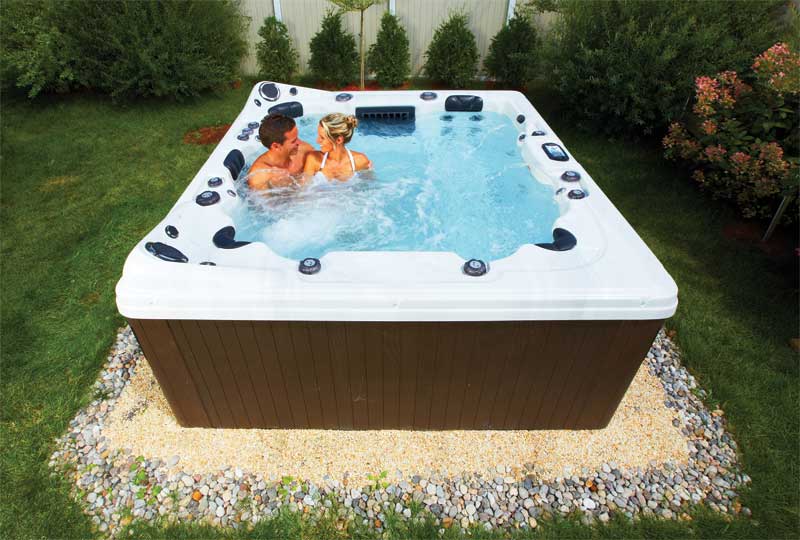By Colin Taylor, B.Sc.

After many years working in the water chemistry field, this author still gets the same question: What is the most important aspect of hot tub water care? In speaking to hot tub customers, service technicians, water care sales teams, retailers, and store owners from all over the world, the answer remains the same: The best way to enjoy the hot tub experience is to maintain the proper sanitizer levels in the water and prevent or remove biofilm buildup in places like plumbing lines, shell surface, or filters. These are the two pillars to hot tub maintenance.
Understanding why sanitizing and controlling biofilm are important
When using chlorine as a sanitizer in the hot tub, it is recommended the water should always maintain a residual of 3 to 5 parts per million (ppm), or 4 to 6 ppm when using bromine. Basic test strips reflect this benchmark with the acceptable colour region used to indicate water chemistry levels. It is necessary to monitor and regulate these levels daily.
Hot tub water must always have the recommended level of sanitizer available to keep the water free of harmful bacteria. Why is this important? Consider the following: The organic matter introduced into the water by two bathers during a 20-minute soak can eliminate almost all traces of available sanitizer. There is no sanitizer remaining because it has performed its job of destroying the organic particles introduced into the water by the bathers. This is why the addition of a sanitizer should mirror hot tub usage.
There are simple ways to achieve a consistent sanitizer level. Chlorine and bromine are the most effective chemicals to reduce or kill bacteria in hot tub water. A chlorine generator will convert salt to chlorine, while an ozone system also works well to support sanitization. Floating dispensers, filters, in-line plumbing sticks, granules, liquids, or tablets are all ways of introducing sanitizer into the water.
A low/inadequate sanitizer level is a direct link to many problems relating to the inability to achieve clean and clear hot tub water. For example, one common issue is cloudy, odorous water. Shocking the water with a sanitizer can easily solve this problem.
In other cases, the water can be so far out of accepted balance that bacteria will proliferate to the point where super chlorination is necessary. This requires keeping the hot tub water above 10 ppm free chlorine for 24 hours. Super chlorinating can resolve the issue and eliminate the need to drain and refill the hot tub; however, it does not need to reach this point.
Adding a non-chlorine shock oxidizer after each hot tub use is another preventative measure that helps sanitizers work more efficiently, while also providing a more luxurious and relaxing hot tub experience. In fact, dispensing 28 to 56 g (1 to 2 oz) of potassium peroxymonosulfate (also known as MPS, and potassium monopersulfate) non-chlorine shock will oxidize organic matter quickly. This will help keep the hot tub water clear for longer periods, while also improving the sanitizer’s efficiency.
Some common complaints from hot tub owners are the way sanitizers smell or that they are harsh and dry out their skin. In these cases, the use of a water conditioner can help or completely neutralize the negative side effects of chlorine or bromine.
Hot tub owners should think of routine hot tub water care in similar fashion to washing and conditioning their hair. For instance, shampoo cleans the hair, which is the equivalent to sanitizing the water, while conditioner makes the hair healthy, shiny, easy to manage, and stronger for the future, which is similar to conditioning the water to make it softer and fresher, while also protecting hot tub components from the harsh cleansing.






